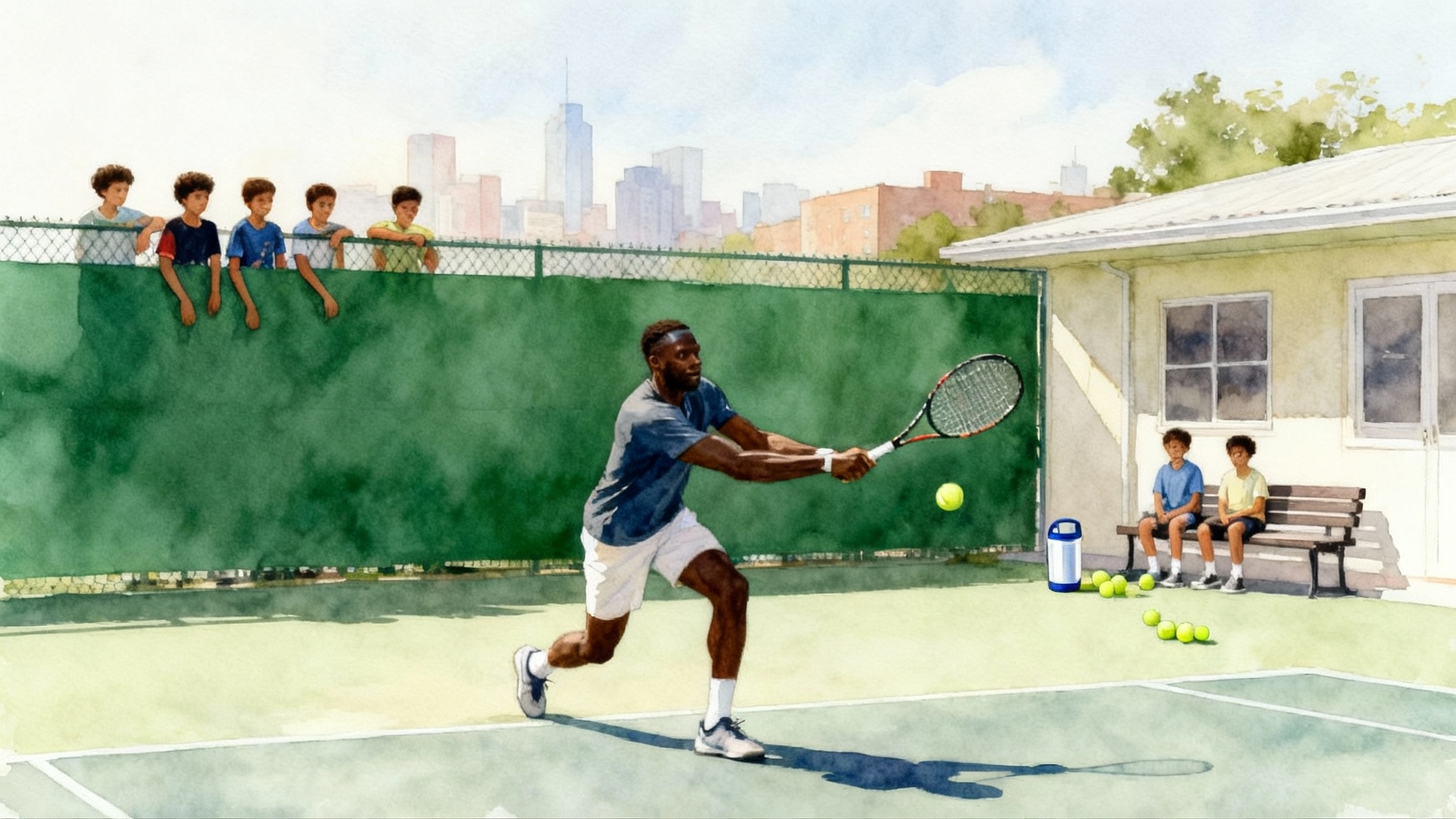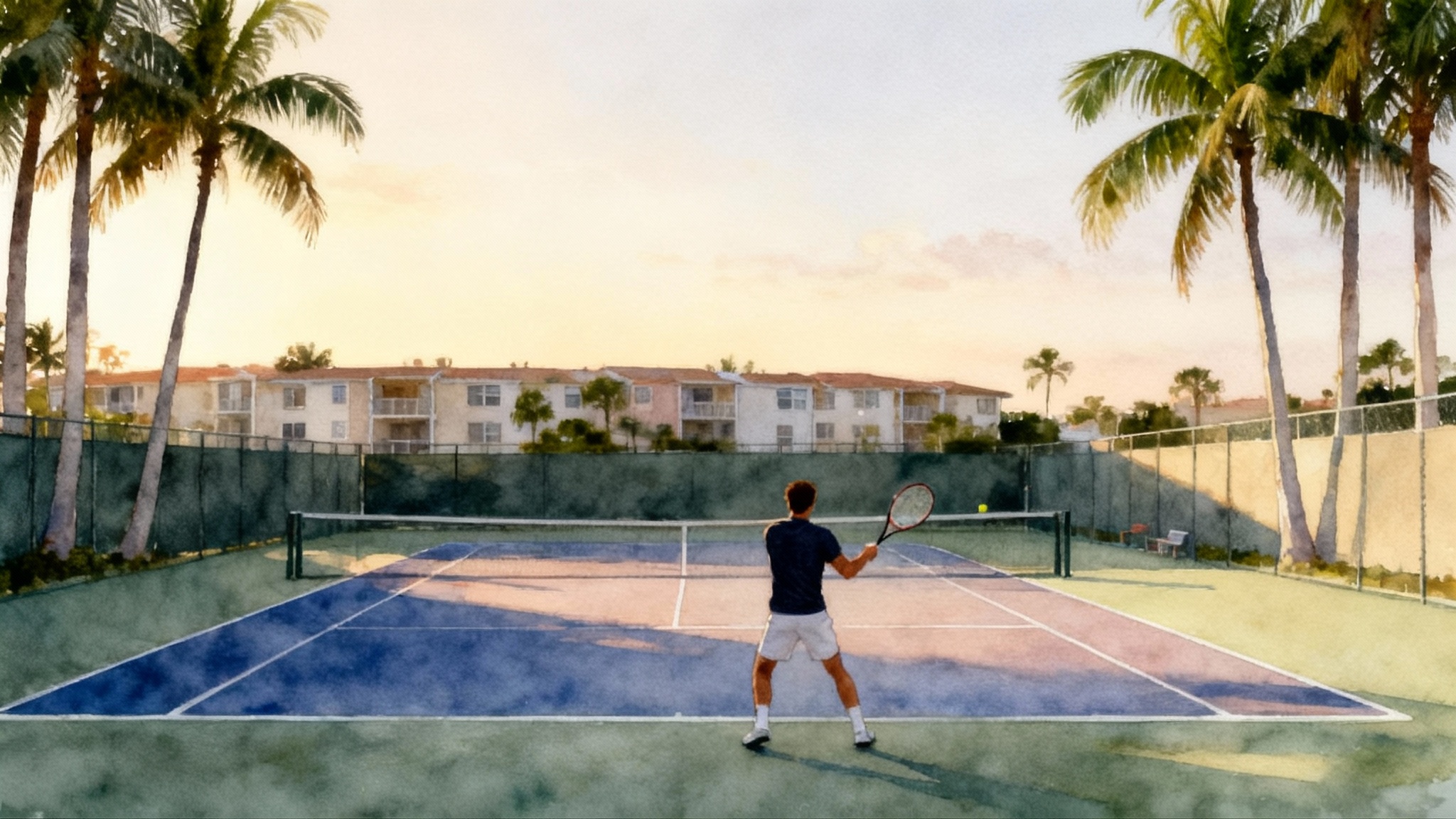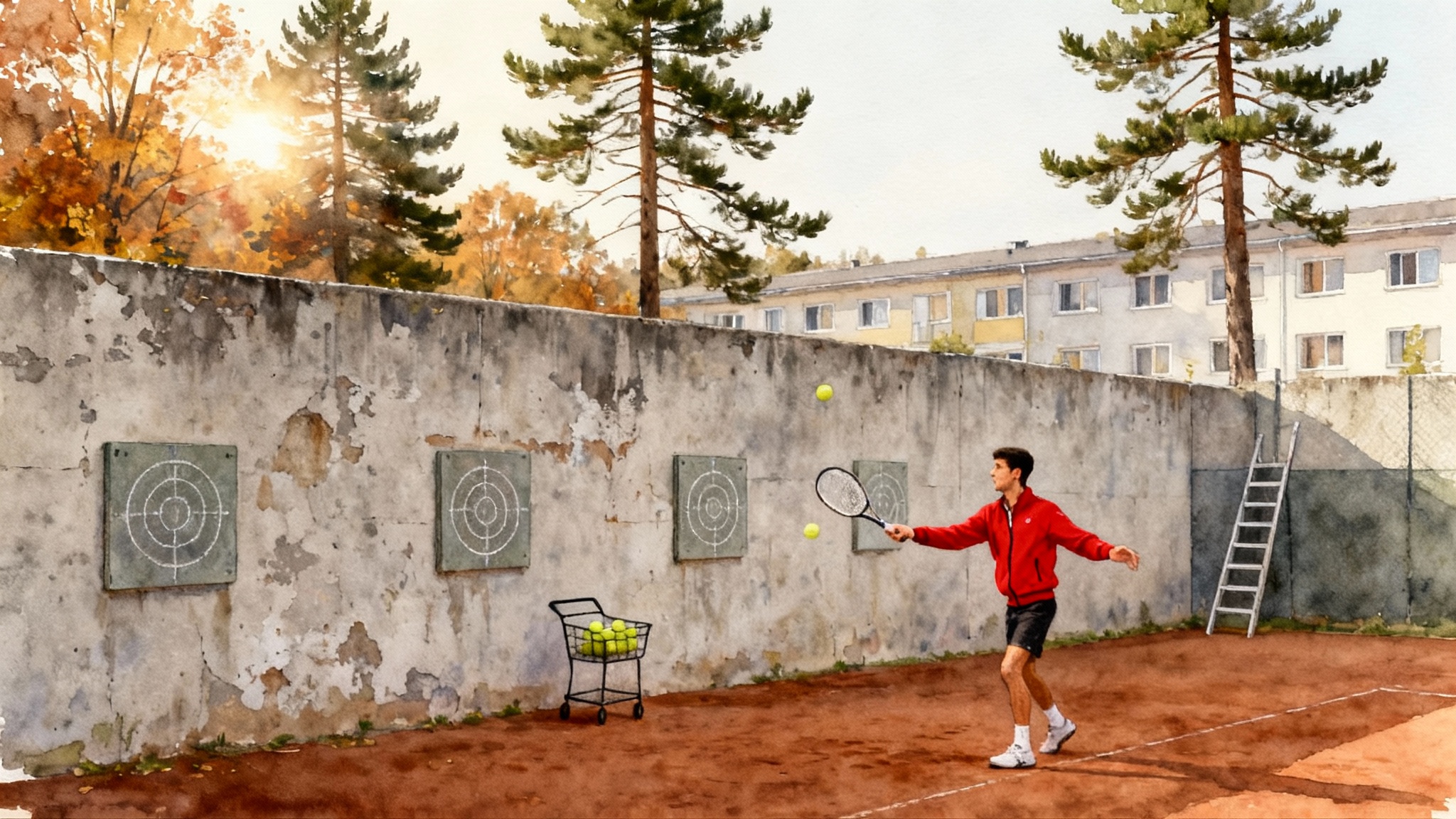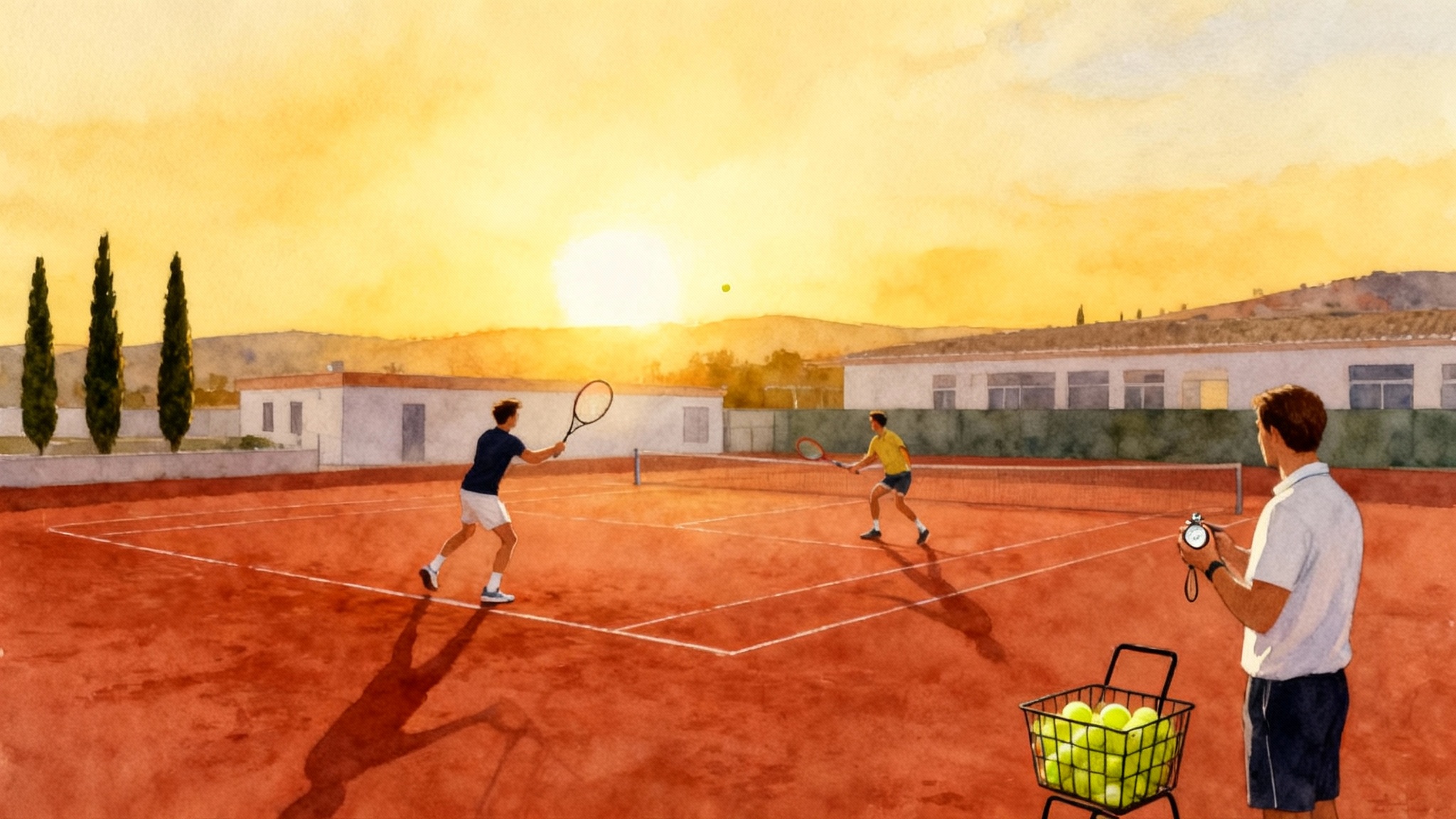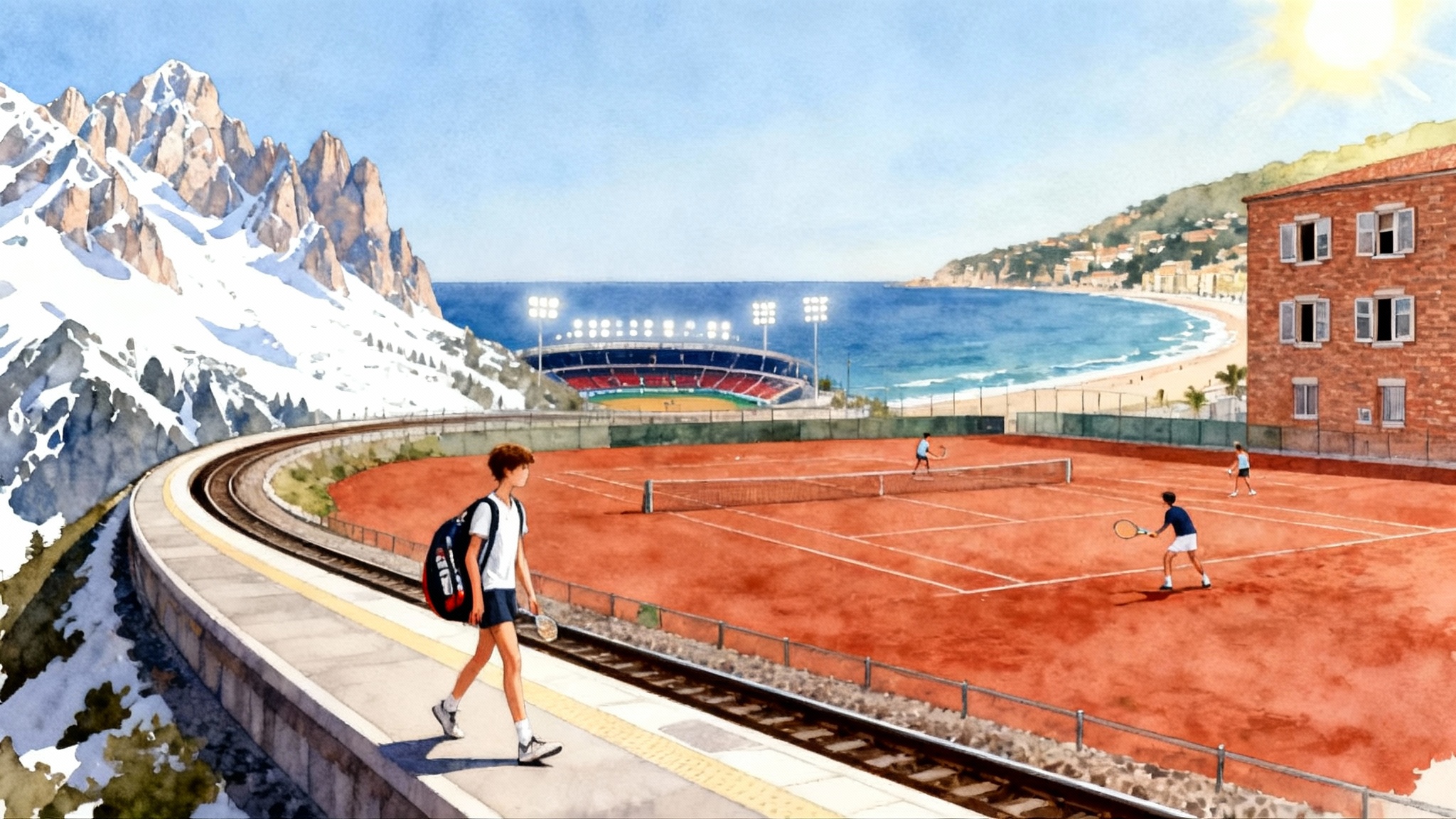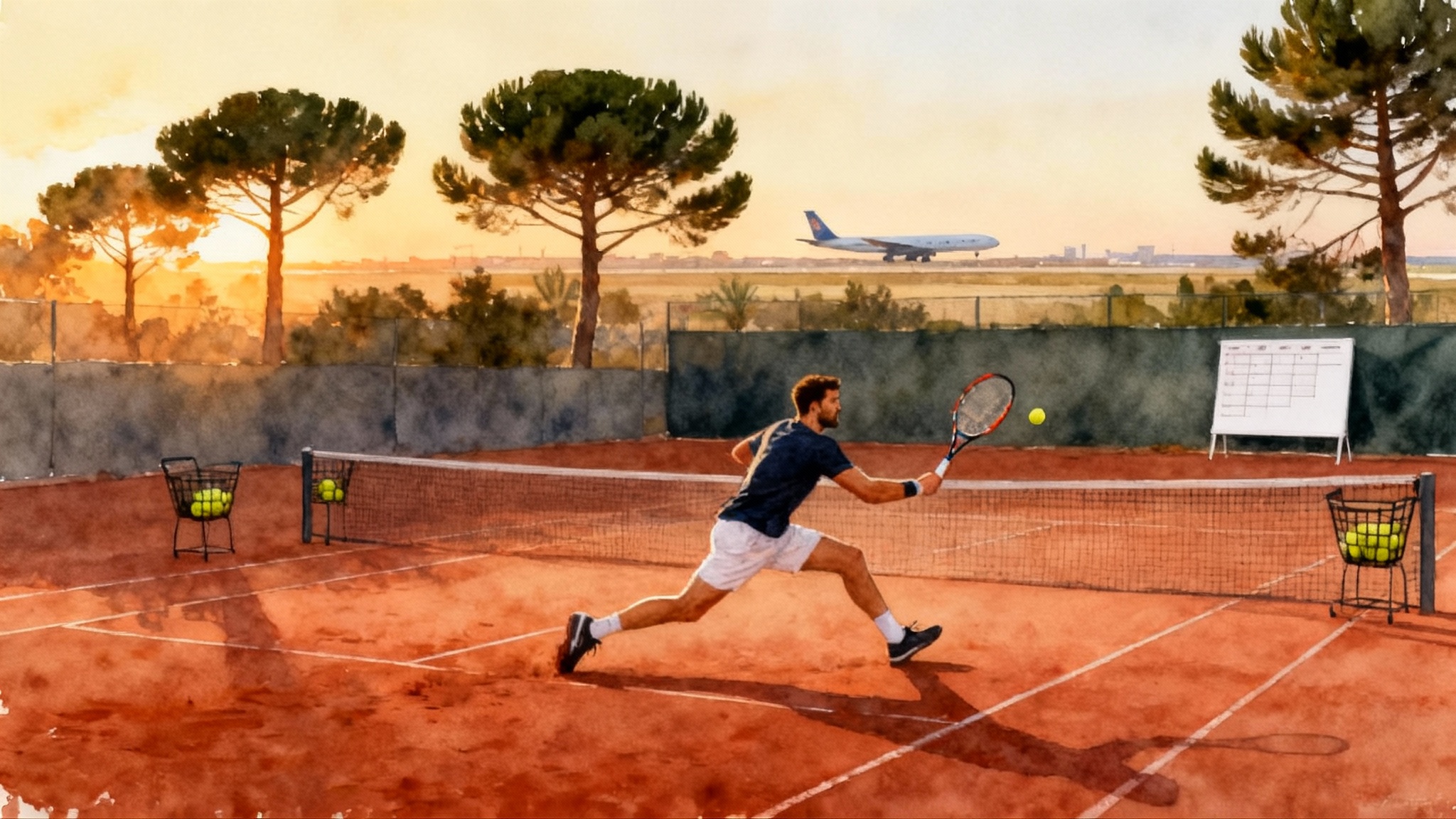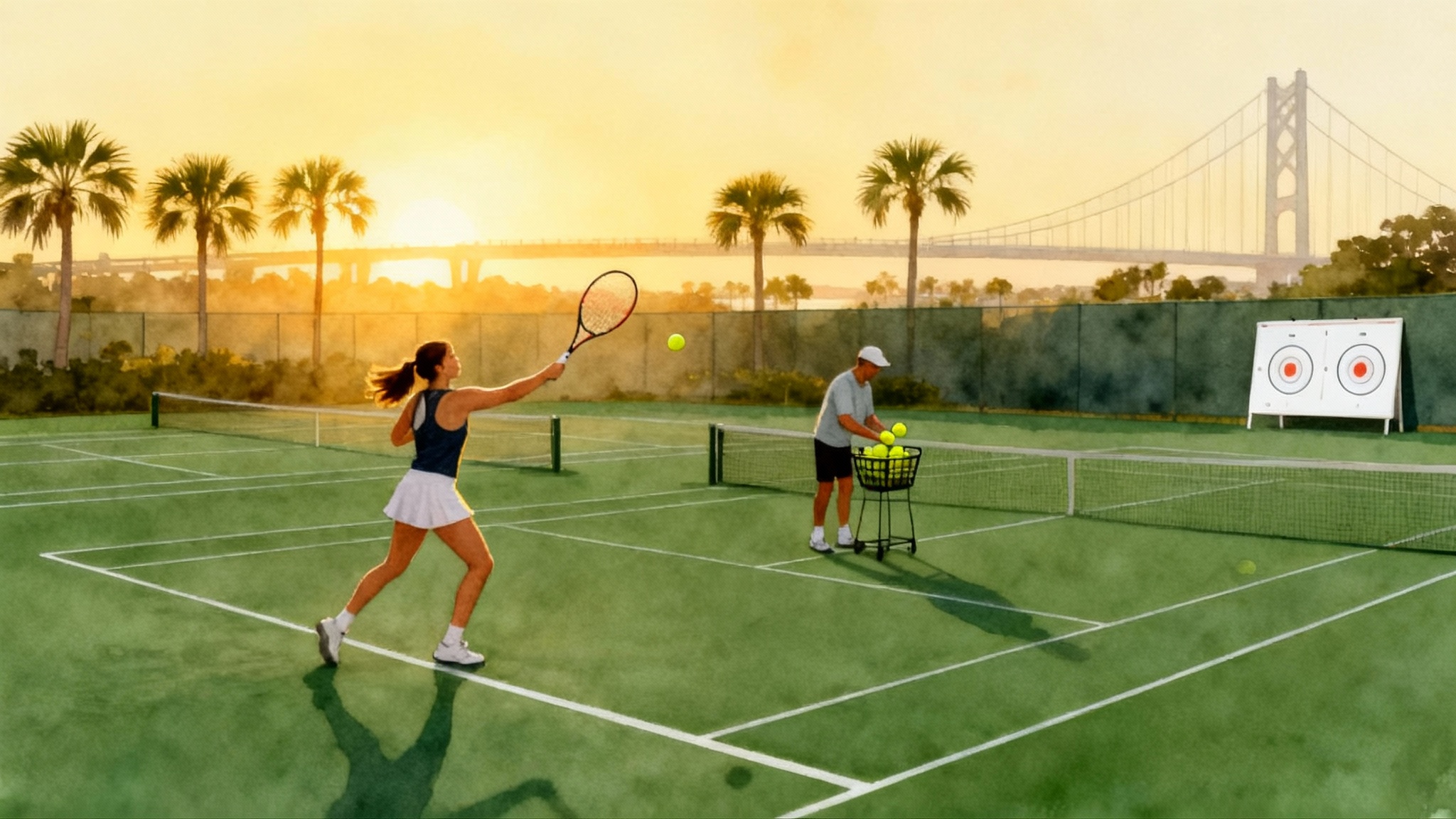From Oslo to Mallorca: How Rafa Nadal Academy Forged Casper Ruud
In 2018, Casper Ruud and his father Christian based training blocks at Rafa Nadal Academy. Clay-first volume, pattern drilling, and a values-led culture turned promise into Slam finals and a top 5 ranking. Here is the blueprint.

The decision that changed a career
In early 2018, a 19-year-old Casper Ruud and his father Christian faced a fork in the road. Casper had shown obvious talent, but results stalled in the space where junior stardom meets the reality of the men’s tour. The choice they made was both simple and brave: base multi-week training blocks at the Rafa Nadal Academy official site in Mallorca, while keeping Christian as the lead voice. That decision reframed the family project into a professional ecosystem.
What makes that move decisive is not the logo on the shirt, but the order of operations the academy enforces. First comes clay-first volume. Then come clear pattern libraries drilled at purposeful intensity. Wrapped around both is a values-driven culture that treats small habits as the foundation for big-stage composure. If you want a single line that describes what changed for Ruud, it is this: his daily environment got specific, repeatable, and accountable.
A family team meets an ecosystem
Christian Ruud was a top 40 professional in the 1990s, and he remained his son’s full-time coach through the transition to the tour. The academy did not replace him. It supplied infrastructure that a two-person team cannot easily scale: deep sparring pools, a consistent volume of clay-court work, integrated fitness and physio support, and a daily schedule that rewarded punctuality and discipline as much as shotmaking.
Families often worry that a destination academy will erase the parent-coach’s role. The opposite happened here. Christian kept the strategic compass and the selection of tournaments. The academy supplied the terrain. The combination reduced friction. The father set the direction. The place made it unavoidable to do the work. You can see similar parent-plus-ecosystem success in the Pilic system that shaped Djokovic.
Why clay-first volume works
Clay forces honest rallies. On red clay you cannot shortcut your way out of a neutral rally with one flashy strike as often as on a slick hard court. That matters for a young player with a heavy forehand who still needs robustness in neutral phases. Clay extends the rally while lowering the probability of free errors. It is the perfect laboratory for learning to shape points, much like the clay culture that Ferrero Equelite shaped Alcaraz.
A clay-first block is not a vacation to a slower surface. It is a structured period where the daily plan nudges a player toward qualities that scale on every surface: depth, height, margin, stamina, and footwork that repeats under stress. Think of it like weight training for patterns. When you go back to hard courts, those patterns do not disappear. They speed up.
A weekly clay microcycle that builds robustness
Here is what a typical seven-day clay block can look like for an aspiring pro. The academy’s schedule varies, but the principles are consistent.
- Monday: High-volume rallying for length and height. Balls are tracked for first bounce depth past the service line. Players earn points for sustained depth, not for winners.
- Tuesday: Forehand pattern day. Crosscourt heavy forehand to the opponent backhand until a short ball appears. Transition to inside-in or inside-out. Scoring is tied to the correct decision rather than the outright result.
- Wednesday: Serve plus one on clay. First serve out wide to deuce court, forehand to the open ad court, then reestablish neutral with a deep crosscourt. The goal is to start offense without reckless red-lining.
- Thursday: Backhand hold day. Two crosscourt backhands to stretch the opponent, then a down-the-line change to force a defensive forehand reply. Fitness is integrated with a short rest protocol.
- Friday: Defensive neutral day. Players start five feet behind the baseline, recovering with a high, heavy ball that resets the rally. Coaches measure rally length before offense appears.
- Saturday: In-house match play with constraints. For the first four games, every point must include at least six balls unless a short ball is created. After that, the constraint is removed.
- Sunday: Recovery and video. Clips highlight whether the patterns led to better court position, not just winners.
The point is not endless grinding. The point is a daily nudge toward repeatable patterns that hold up when the lungs burn and the scoreboard turns awkward.
Pattern drilling: from theory to muscle memory
Casper Ruud’s identity is clear now. A heavy, elastic forehand that builds court position, a reliable backhand that holds shape, a serve that starts offense without overreaching, and legs that never argue with one more ball. Pattern drilling hardwired that identity.
Below are three example sessions that any serious program can adapt.
- Forehand base with two-way exits
- Feed: Coach feeds neutral deep crosscourt balls.
- Rule: Player must hit three crosscourt forehands past the service line with visible net clearance before choosing an exit.
- Exit options: Inside-in through the deuce lane or inside-out toward the ad baseline corner.
- Coaching focus: Same swing speed on the third ball as on the first, with posture that stays tall through contact.
- Why it travels: On a faster court, the third ball arrives sooner. The decision stays the same.
- Backhand anchor with down-the-line trigger
- Feed: Alternating crosscourt backhands.
- Rule: Two crosscourt backhands that land three feet from the sideline, then a change of direction down the line only if the opponent’s contact depth retreats behind the baseline.
- Coaching focus: Load the outside leg, commit to the line without leaning.
- Why it travels: This pattern stops opponents from living on your backhand side. It holds the center.
- Serve plus one with score pressure
- Setup: First serves to three targets on both deuce and ad sides. Each target is followed by a forehand to a designated lane.
- Rule: The pattern must be completed under a game score with no second tries for missed targets.
- Coaching focus: Same routine between points, breath on the toss, feet still.
- Why it travels: Under pressure, the player does not search for magic. He launches a pattern he has logged hundreds of times.
Pattern drilling is not a set of pretty cones. It is the removal of guesswork. By the time Ruud stood in Paris and New York under the lights in 2022 and 2023, he was not seeking a new idea. He was applying the ones he had rehearsed until they felt like home.
Values that turn effort into outcomes
If you watch a full day at a well-run academy, you learn almost everything you need to know about its values before a ball is struck. Players arrive early. Courts are clean. Coaches make the boundaries clear. Feedback is about the next rep rather than the last mistake. The culture at the Rafa Nadal Academy elevates such basics into non-negotiables.
Three elements repeat across days:
- Humility in the face of volume: The ball basket does not care who you are. You finish the set.
- Attention to small tasks: Pick up balls, hydrate on schedule, stretch before you have to.
- Respect for the group: You are on time because the next player depends on your slot ending when it should.
These sound simple. They are hard to maintain when you are tired, when travel is long, and when the ranking does not move for months. Culture is what remains when talent gets frustrated. Ruud benefited because his natural temperament matched the Academy’s tempo. He did not need noise. He needed a place where ordinary days count.
The scoreboard tells the story
Growth often looks like nothing for a while, then suddenly like everything. Ruud’s ranking rise and results map neatly onto the choices he and his team made. You can trace that arc in his Casper Ruud ATP profile.
- 2019: First full season holding ground on the ATP Tour. More match toughness, especially on clay.
- 2020: First ATP title in Buenos Aires. A breakthrough that validated the clay-first approach.
- 2021: A cluster of ATP titles, mostly on clay, and deep runs at Masters events. The ability to win week after week began to show.
- 2022: Finals at Roland Garros in June and the United States Open in September, plus the season-ending championship final. A career-high ranking inside the top two before settling comfortably inside the top five. The patterns scaled to the very top.
- 2023: Another Roland Garros final in June. The capacity to compete for majors was no longer a surprise; it was a habit.
Results never belong to one cause. But when you track the arc, you see the imprint of clay volume, pattern clarity, and a culture that pushed consistent daily work. The Academy did not change who Ruud is. It amplified the best parts and shaved off the waste.
Takeaways for families: how to think about a destination academy
Every family project in tennis faces the same puzzle. What is the right moment to leave home base for blocks at a destination academy, and how do you protect the family dynamic while bringing in professional structure? Use these filters.
When to choose a destination academy
- Your player needs a deeper match pool: If most sessions at home end with the same two practice partners, the learning curve is flattening. A destination academy offers variety in styles and levels.
- You can commit to blocks of four to six weeks: One week is a welcome vacation. Real change needs repetition over a month or more.
- The goal is pattern clarity, not exposure: Choose an academy that can describe in one sentence what your player will become better at by the end of the block.
- Fitness and recovery are integrated, not bolted on: Ask how strength, mobility, and physio sessions are scheduled around on-court work.
How to balance the parent-coach role with pro infrastructure
- Keep strategy in the family: The parent-coach should set tournament schedules, long-term goals, and the major technical anchors. This keeps identity stable.
- Let specialists own the daily reps: On-court assistants, fitness coaches, and physios should control each session’s flow. This removes micromanagement from the parent-child relationship.
- Create a single feedback channel: Pick one weekly meeting where academy staff brief the parent-coach. No athlete thrives with three voices giving different instructions at the fence.
- Put agreements in writing: A short one-page plan covering weekly volume, priority patterns, and any technical changes keeps everyone honest and reduces friction.
Why clay-volume blocks accelerate development
- Rallies are longer, so learning cycles are richer: More balls per point give your player more quality decisions per hour.
- Footwork is forced to improve: Clay punishes lazy recovery. It teaches spacing and balance without the lecture.
- Confidence travels: Once your player knows how to build a point with shape and depth, faster courts become an ally rather than a shortcut.
Make in-house match play your weekly anchor
A common mistake is to grind drills all week then arrive at a tournament rusty under score pressure. The fix is simple.
- Schedule two match-play slots per week: One should use constraints that force patterns, such as a six-ball minimum before offense. The second should simulate tournament conditions with normal scoring and new balls.
- Add micro-goals to the score: For example, earn two points per set by winning a rally where you held the backhand crosscourt twice and then changed line.
- Track patterns, not just wins: A practice match is a laboratory. Record how many points began with your serve plus one pattern, or how often you won points after a defensive neutral ball.
A 12-week roadmap any serious junior can adapt
The point of Ruud’s example is not to idolize a star. It is to steal a process. Here is a practical plan for a junior or college-bound player, with parent-coach and academy sharing the load.
-
Weeks 1 to 4: Clay-first foundation
- Daily theme: Depth past the service line with safe net clearance.
- Patterns: Forehand crosscourt base with two-way exits; backhand hold then down the line.
- Fitness: Three lifts per week focused on lower body strength and trunk stability; two aerobic sessions at steady effort.
- Match play: One constraint match midweek, one open match on Saturday.
-
Weeks 5 to 8: Serve plus one and transition
- Daily theme: Start points with a high percentage first serve, then reclaim center with a forehand to big targets.
- Patterns: Serve wide deuce, forehand to ad corner; serve T ad, forehand to deuce corner.
- Fitness: Add short sprint work and lateral agility ladders that mimic recovery steps on clay.
- Match play: Score-based pressure where a double fault or a missed serve target costs two points. The athlete feels consequence without panic.
-
Weeks 9 to 12: Hard court transfer and travel rehearsal
- Daily theme: Same patterns at faster speed. Shorten backswings without changing decisions.
- Patterns: First strike when the ball is short, but always after a build shot.
- Fitness: Maintain strength, bias toward elastic power and recovery between points.
- Match play: Two full matches per week, one with new balls and a changeover clock to simulate tournament tempo.
At the end of week 12, hold a review with the academy and the parent-coach. Ask three questions. Which pattern felt automatic under pressure. Which one still broke under stress. What habit outside the lines most affected the quality of practice. The next block writes itself from those answers. For another transferable model, study the Piatti Academy Sinner playbook.
What to watch for when you visit any academy
Whether you travel to Mallorca or anywhere else, use the Ruud template as a checklist.
- Surfaces and scheduling: Is there enough clay time to build volume. Is there a reason for each day’s surface choice.
- Pattern clarity: Can a coach describe your player’s two priority patterns in fewer than fifteen seconds.
- Sparring pools: Are there hitters better than your player in the specific ways you want to improve.
- Culture tells: Are sessions on time. Are balls and courts tidy. Are phones away during work blocks.
- Feedback habits: Do coaches speak about the next ball more than the last error.
- Recovery integration: Is physio proactive rather than only reactive.
If you see these, you are in a place where daily life quietly builds competitive edges.
The quiet power of the right environment
Casper Ruud’s rise from promising to perennial contender did not come from a single stroke change or a magic week on tour. It came from a move in 2018 to a place that matched his temperament and his family’s plan. Clay-first volume tuned his rally DNA. Pattern drilling removed guesswork when the score got tight. A values-led culture made ordinary days count over years.
Families do not need to copy the location to copy the logic. Pick an environment that makes the right habits unavoidable. Keep the parent-coach as the strategic anchor while letting professionals run the daily operations. Build on clay when you can, then carry those patterns everywhere. Add in-house matches that reward decisions, not just winners.
Do this long enough, and the ranking takes care of itself. That is the lesson from Oslo to Mallorca, from a family project to a pro ecosystem, and from good to ready when the stage turns very bright.
